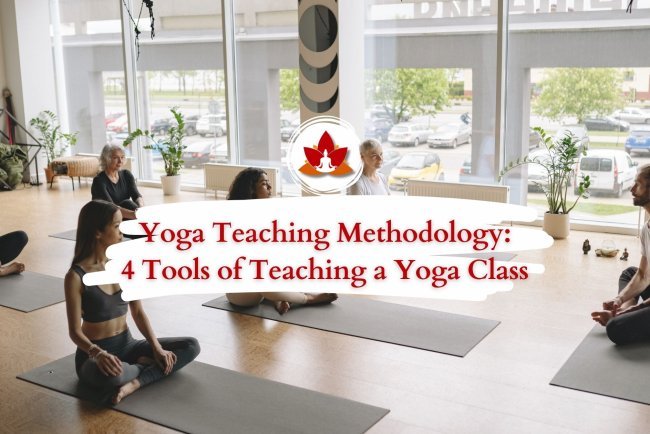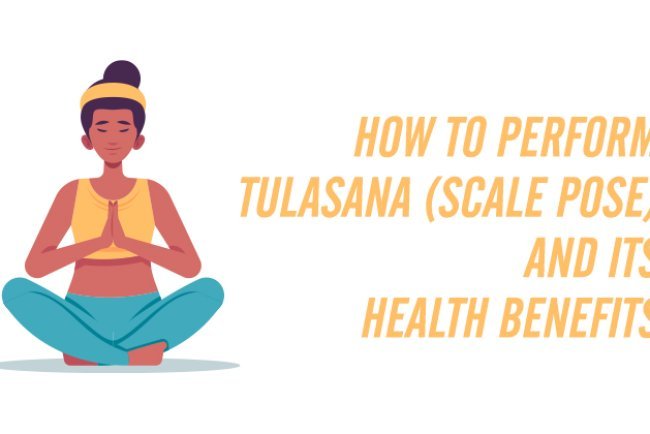How to Become a Certified Yoga Teacher: A Complete Guide

Yoga is a transformative practice that not only benefits physical and mental health but can also be a fulfilling career. If you're passionate about yoga and want to share its benefits with others, becoming a certified yoga teacher is a rewarding path. Whether you choose in-person or online yoga teacher training, obtaining a yoga certification opens doors to teaching opportunities worldwide. This guide will walk you through everything you need to know about how to become a yoga instructor, including different training options, certification requirements, and career opportunities.

Step 1: Decide on Your Training Format
When it comes to yoga instructor certification, you have two primary options: in-person and online yoga teacher training. Each format has its own benefits and considerations.
In-Person Yoga Teacher Training
Attending a yoga teacher training program in person provides an immersive experience. You get hands-on practice, direct feedback from instructors, and an opportunity to build connections with fellow trainees. Many yoga schools worldwide offer 200-hour yoga certification programs, which serve as the foundational course for aspiring yoga teachers.
The in-person training experience allows for a deeper connection with your teachers and fellow students, enabling interactive learning, real-time adjustments, and a sense of community. Many trainees find that physically being in a yoga studio or retreat center enhances their understanding of body alignment and movement.
Online Yoga Teacher Training
If you have a busy schedule or prefer the flexibility of learning from home, an online yoga teacher training course is a great alternative. Accredited yoga certification programs are now widely available, allowing students to complete their studies at their own pace. Many yoga schools online offer live classes, pre-recorded sessions, and one-on-one mentorship to ensure a comprehensive learning experience.
With technology advancing, online yoga certification courses have improved dramatically. Interactive video sessions, live Q&As, virtual workshops, and online communities help create an enriching experience. Whether you choose to study entirely online or opt for a hybrid model, online yoga instructor training is now just as valuable as in-person programs, provided you select an accredited program.
Step 2: Choose a Yoga Teacher Training Program
To become a certified yoga teacher, you need to enroll in a yoga teacher course online or in person. Look for programs that offer a certified yoga instructor course approved by a reputable yoga alliance or governing body. The most common program is the 200 hour yoga teacher training course (200 hr RYT), which includes:
-
Yoga philosophy and history: Understanding the roots of yoga, including ancient texts such as the Yoga Sutras and Bhagavad Gita.
-
Asana (postures) and alignment principles: Learning how to safely practice and teach yoga poses with proper form.
-
Pranayama (breathwork) and meditation: Exploring different breathing techniques and mindfulness practices.
-
Anatomy and physiology: Understanding how yoga affects the body and learning the mechanics of movement.
-
Teaching methodology and sequencing: Developing skills to lead effective yoga classes with well-structured sequences.
-
Hands-on adjustments and modifications: Learning how to safely assist students in their practice.
-
Ethics and professionalism in teaching: Understanding the responsibilities and ethical guidelines of being a yoga teacher.
If you wish to deepen your knowledge, you can pursue advanced training such as 300 hour or 500 hour YTTC. Many specialized training options exist, including courses in Yin Yoga, Restorative Yoga, Prenatal Yoga, and more.
Step 3: Enroll in a Certified Yoga Instructor Course
To ensure your certification is valid, choose a yoga instructor training program recognized by a reputable organization. The Yoga Alliance is the most widely recognized body that accredits yoga teacher certification programs globally. If you prefer distance learning, enrolling in a yoga teacher certification online program that is accredited ensures that you meet industry standards.
When selecting a course, consider factors such as the curriculum, the credibility of instructors, the availability of mentorship, and reviews from previous students. Some schools even offer scholarships or payment plans to make training more accessible.
Step 4: Complete Your Training and Assessments
A yoga certification program typically consists of practical and theoretical components. Whether you're taking a yoga instructor course online or in person, you will need to:
-
Attend required classes
-
Complete teaching practice sessions
-
Pass written and practical exams
-
Submit assignments or case studies (depending on the program)
Some training programs require students to complete a final teaching practicum, where they lead a class under supervision. This ensures that you are fully prepared to teach yoga professionally.
Step 5: Get Certified and Register as a Yoga Teacher
Once you complete your yoga instructor certification, you can officially call yourself a certified yoga teacher. If you completed a 200 hr RYT program, you can register with the Yoga Alliance as a Registered Yoga Teacher (RYT-200). This enhances your credibility and helps you gain employment at studios, wellness centers, and retreats.
Additional certifications, such as First Aid and CPR training, may also be required by some employers.
Step 6: Gain Teaching Experience
With your yoga instructor certification online or in-person training complete, it's time to start teaching! You can begin by:
-
Assisting senior yoga teachers
-
Offering free or donation-based community classes
-
Teaching friends and family
-
Applying for teaching positions at local studios
-
Hosting private or online yoga classes
Building experience as a teacher allows you to refine your skills, build confidence, and develop your unique teaching style. The more experience you gain, the more opportunities will open up in the yoga industry.
Step 7: Continue Learning and Specializing
To stay competitive in the industry, continuous education is essential. Consider taking additional yoga instructor classes or enrolling in specialized training such as:
-
Prenatal Yoga
-
Yoga Therapy
-
Kids' Yoga
-
Meditation and Mindfulness
-
Advanced Asana Techniques
Attending yoga workshops, retreats, and advanced training courses can help you deepen your practice and expand your teaching skills.
The Secret to Becoming a Yoga Teacher: What You Really Need to Know
With so much information floating around, it’s easy to get overwhelmed when trying to figure out how to become a yoga teacher. One source says you need 200 hours of training, another says you need years of experience, and some say you don’t even need certification at all. Sound familiar?
The truth is, the path to becoming a yoga instructor isn’t always linear—and it’s not as complicated or rigid as it might seem. In fact, did you know that in many parts of the world, you can technically teach yoga without any certification?
But here’s the thing: if you’re serious about teaching safely, confidently, and with impact, you need the right foundation, guidance, and a clear step-by-step understanding of the process.
Whether you're just beginning your yoga journey or ready to turn your passion into a profession, this guide will walk you through everything you need to know to become a knowledgeable, confident, and inspiring yoga teacher.
What Do You Really Need to Become a Yoga Teacher?
In the U.S. and most Western countries, there’s no legal requirement or governing body that says you must be certified to teach yoga. That means—technically—you could roll out your mat tomorrow and start teaching a class.
But hold that thought.
Just because you can doesn’t mean you should. Here’s why most yoga teachers still go through formal training:
1. Studios Require Certification
Most yoga studios won’t even consider hiring you without at least a 200 hour yoga teacher training certification, usually from a Yoga Alliance–registered school. This helps ensure consistency, safety, and credibility in their offerings.
2. Insurance is a Must
Whether you’re teaching at a studio, online, or even in a park, you’ll likely need liability insurance—and most insurance providers require proof of certified training. Without it, you’re exposing yourself to serious risk.
3. Students Expect Qualified Teachers
Students want to feel safe and supported, especially in a physical and spiritual practice like yoga. They expect their teacher to know more than just how to flow through poses. They want someone trained in:
-
Anatomy and alignment
-
Injury prevention
-
Class sequencing
-
Ethics and philosophy
-
Breathwork and meditation techniques
4. Teaching Without Training is Risky
Leading a class without proper training isn’t just risky for you—it’s risky for your students. Misguided adjustments or poorly structured sequences can lead to injuries or negative experiences. Proper training equips you to teach responsibly, support your students safely, and create meaningful classes.
What Do Yoga Studios Look for in a Yoga Teacher?
Since there’s no official government regulation defining what makes someone a qualified yoga teacher, the responsibility falls on individual yoga studios to set their own standards—and those standards can vary. However, most studios tend to look for a few key qualifications and qualities when hiring.
1. Certification (Minimum: 200 Hour YTT)
At the very least, studios expect instructors to have completed a 200-hour Yoga Teacher Training from a recognized or Yoga Alliance–registered school. This is considered the foundational level of training, covering asana, sequencing, anatomy, philosophy, and teaching methodology.
2. Advanced Certification (Preferred: 500 Hour YTT)
As the yoga industry becomes more competitive, many studios are giving preference to teachers who have gone beyond the basics with a 300-hour advanced training, completing a total of 500 hours of certification. This shows a deeper commitment to the practice and a more refined teaching skillset.
3. Teaching Experience
While certification is important, hands-on teaching experience is often what sets applicants apart. Studios appreciate teachers who have led classes, assisted senior instructors, or taught community/yoga donation classes. Even teaching online or in casual settings can help build your credibility.
4. Authenticity & Presence
Studios often seek teachers who lead with authenticity, are grounded in their personal practice, and can connect with students on a deeper level. Confidence, compassion, and strong communication skills go a long way in making a lasting impression.
5. Special Skills or Niches
Teachers who bring something unique to the table—such as prenatal yoga, trauma-informed yoga, Ayurveda, meditation, or breathwork—often stand out. Studios value versatility and the ability to offer diverse class types.
6. Professionalism & Reliability
How you show up matters. Studios want teachers who are punctual, prepared, respectful, and team-oriented. If you can demonstrate that you’re dependable and easy to work with, you're already ahead.
Where to Find the Best Yoga Certification Online?
If you're looking for a yoga certificate course, explore reputable yoga schools online that offer online yoga instructor training. Many programs provide a 200 hour yoga certification that meets industry standards. Some highly rated options include:
-
Yoga Alliance-registered schools
-
Accredited yoga certification programs
-
Online yoga teacher training course providers
Reading reviews, checking testimonials, and reaching out to past students can help you find the best program for your needs.
Can You Complete a 200 Hour Yoga Teacher Training for Under $500?
Yes—you can.
Thanks to the rise of online yoga teacher training, it’s now possible to become a certified yoga instructor for a much more affordable price than traditional in-person courses. Many high-quality online YTT programs offer comprehensive training for under $500, making yoga education more accessible than ever.
But here's the important part:
**Low cost doesn’t have to mean low quality—**but it also doesn’t automatically guarantee a great experience.
What to Look for in a Budget-Friendly Online YTT
1. Live or Recorded Interaction
Make sure the program includes live Zoom sessions, Q&A calls, or at least the ability to interact with teachers in real time. This support is vital for asking questions, receiving feedback, and staying motivated.
2. Accessible Teachers & Mentors
Even in a self-paced format, you should have access to qualified instructors or mentors who can guide you, review your assignments, and provide personalized input.
3. Yoga Alliance Certification (if desired)
If you're looking to register with Yoga Alliance, double-check that the course is a Yoga Alliance–approved Registered Yoga School (RYS 200), especially if you plan to teach at studios.
4. Well-Rounded Curriculum
Look for programs that go beyond just asana. A quality YTT should cover:
-
Anatomy & Physiology
-
Yoga Philosophy & History
-
Sequencing & Adjustments
-
Pranayama, Meditation & Ethics
Conclusion
Becoming a certified yoga teacher is a fulfilling journey that requires dedication and commitment. Whether you choose to complete your yoga instructor training online or in person, selecting the right yoga teacher certification program is crucial. By obtaining a certified yoga instructor course, you can teach yoga professionally, help others on their wellness journey, and build a rewarding career.
If you're wondering how to get yoga certified, take the first step today by researching accredited yoga instructor course online programs and beginning your yoga teacher training journey!
The yoga industry is growing rapidly, and certified yoga teachers are in high demand. With the right training and passion, you can embark on an exciting and meaningful career, guiding others toward health and well-being through the power of yoga.
What's Your Reaction?


























